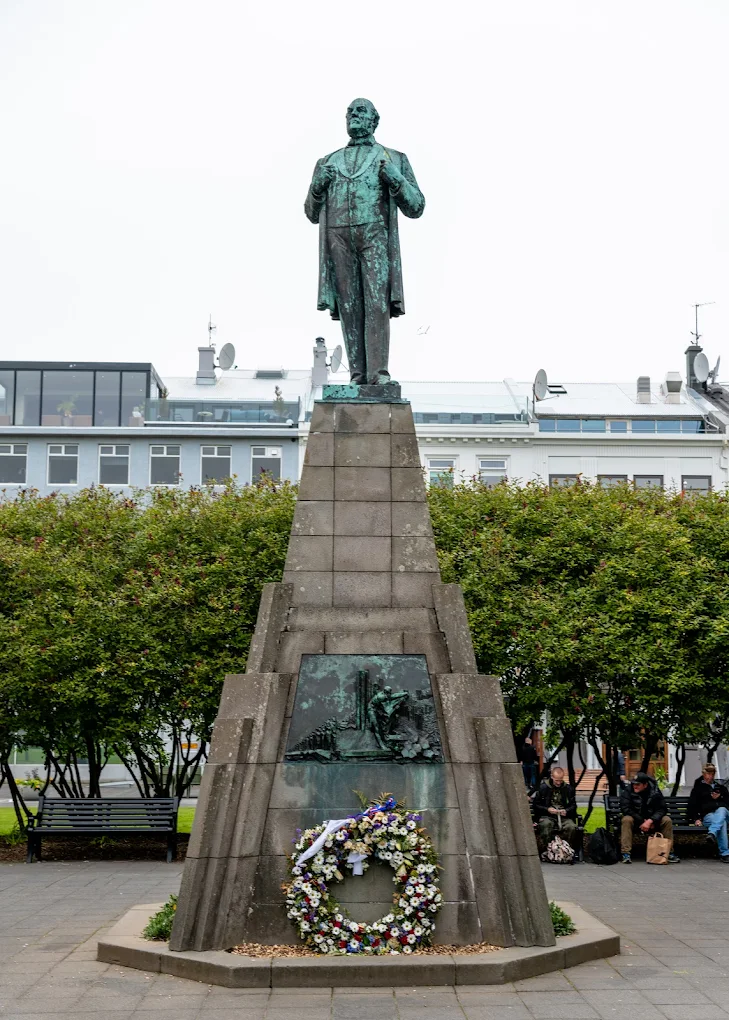Iceland's Independence Day - but why June 17th?
- H. Dísa Guðjóns
- Jun 6
- 3 min read
Updated: Jun 10
(Reykajvík, Iceland) Jón Sigurðsson´s home in Copenhagen (Winnipeg - Canada)
To understand Iceland´s National Day is to understand Jón Sigurðsson, who is often referred to as "Jón Forseti" or President Jon. Though he was never formally president during his lifetime, he was the key Icelandic leader to spearhead Iceland's peaceful struggle for independence from Danish rule in the 19th century.

Sigurdsson was born in the Westfjords of Iceland on
June 17, 1811. Educated in Copenhagen, Denmark – the seat of power that then ruled Iceland, he became a brilliant scholar and politician. His home in Copenhagen, at Øster Voldgade 12, now known as Jónshús, became a crucial meeting place for all Icelanders, fellow intellects and patriots to discuss how to gain freedom from Denmark.
Sigurðsson's profound conviction in Iceland's right to independence was deeply rooted in the very fabric of Icelandic cultural and literary history. From a young age, he was immersed in the study of Old Norse literature and Icelandic history. The medieval Icelandic Sagas, masterpieces of prose detailing the settlement of Iceland, the lives of its early heroes, and the functioning of the unique Icelandic Commonwealth (circa 930-1262 AD), were a particularly potent influence. These texts provided compelling evidence of a sophisticated, independent Icelandic society with its own laws and governance long before Norway and later Denmark showed up in the story. The Sagas painted a picture of a proud, resourceful people capable of self-rule, an image that directly fueled Sigurðsson's arguments for renewed autonomy.
Furthermore, the very existence of the Alþingi, Iceland's parliament established around 930 AD at Þingvellir, was a cornerstone of Sigurðsson's case. The Alþingi is one of the oldest parliamentary institutions in the world. Though its powers had been diminished under foreign rule, its historical continuity provided an unbroken thread of Icelandic national identity and a potent symbol of its inherent right to self-governance. Sigurðsson saw the restoration of the Alþingi's authority not as a radical new demand, but as a rightful return to a cherished historical precedent. His scholarly work meticulously gathered and presented historical and legal arguments, drawing directly from these ancient sources to persuade both his fellow Icelanders and the Danish authorities.
While Iceland didn't achieve full independence until June 17, 1944 (long after Sigurðsson had passed away at the age of 68 in 1879), during the turmoil of World War II when Denmark was occupied by Nazi Germany, Sigurðsson's relentless advocacy for self-governance, his championing of Icelandic language and culture, and his unwavering belief in the Icelandic people laid the critical groundwork. His efforts were so pivotal that when Iceland finally declared itself a republic at Þingvellir – the historic site of Iceland's ancient parliament – his birthday of June 17th was the natural choice for Independence Day.
And so it is, June 17th is a day of celebration, pride and joy. The celebrations will start early and last throughout the evening all over Iceland. Unsurprisingly, celebrations will also be held by Icelanders all over the world. In Manitoba, Canada, Icelanders will gather at the Jón Sigurðsson statue placed in front of their parliament in Winnipeg, bringing flowers and speeches to commemorate Iceland's hero. In fact, there, they call this day "Jon Sigurðsson Day" rather than Independence Day. In Denmark, Icelanders will gather at Sigurdsson’s home where the political meetups took place, and all over the globe local Icelandic clubs will celebrate by gathering to share Icelandic foods and displays of the Icelandic flag.
On this day you may also see women wearing the national costume, a tradition whose popularity soared in the 19th century as Iceland sought independence from Danish rule. The national costume (Þjóðbúning) turned out to be an effective tool for a nation with a growing sense of national identity. Thus, it became and still is today a symbol of Iceland’s strength and ability to stand independently. Yet, no matter how one arrives, pride is evident in everyone connected to Iceland Here and Abroad.
Additional notes of Interest (click for further information links) Jón Sigurðsson Museum (Jon´s family home in Iceland) Jónhús, Jon Sigurðsson´s home in Denmark, open to the public.
Agenda for June 17, 2025 - Celebrations in Reykjavik. Icelandic National Costume
Jón Sigurðsson Day in Winnipeg.









Comments